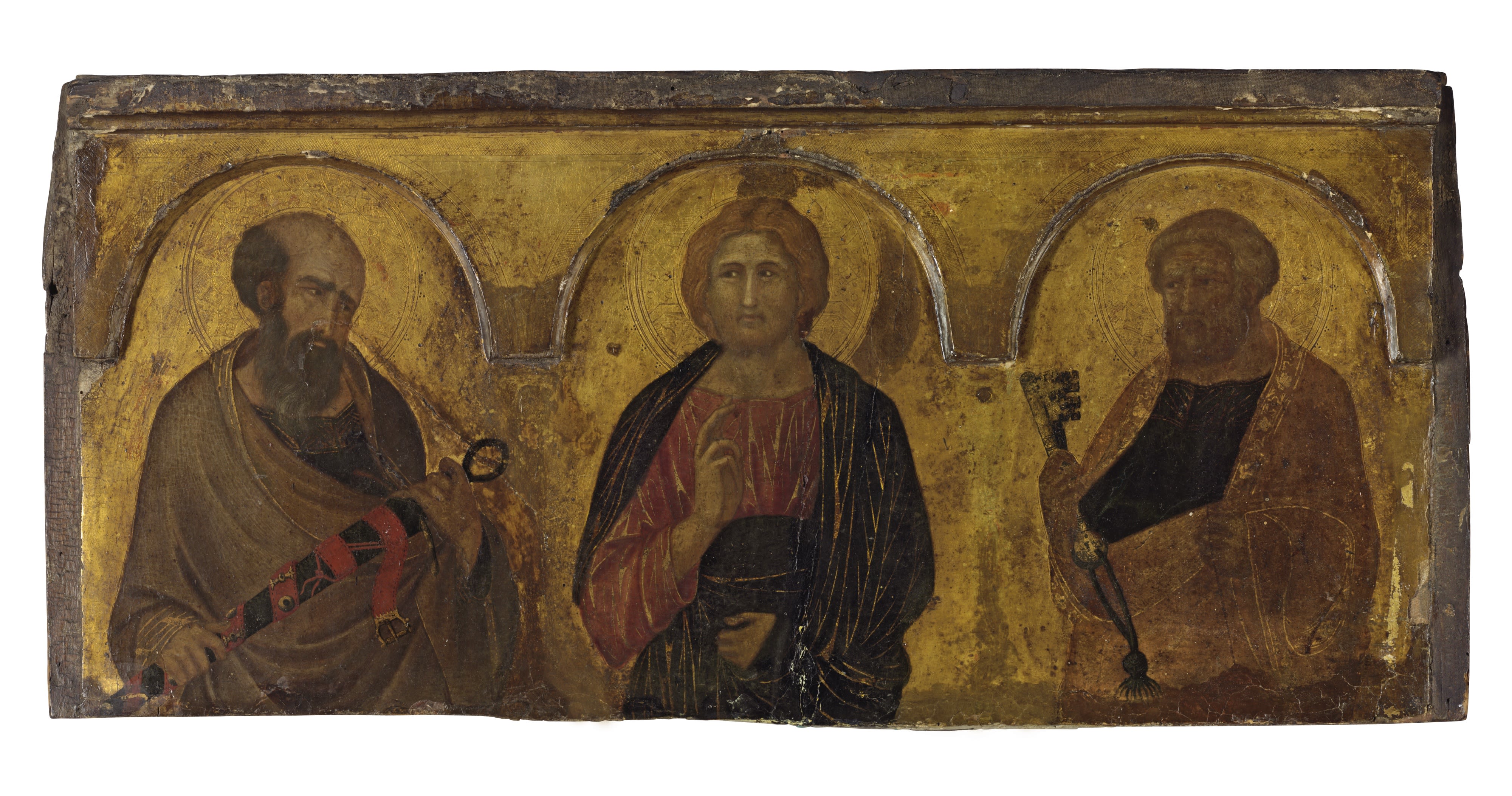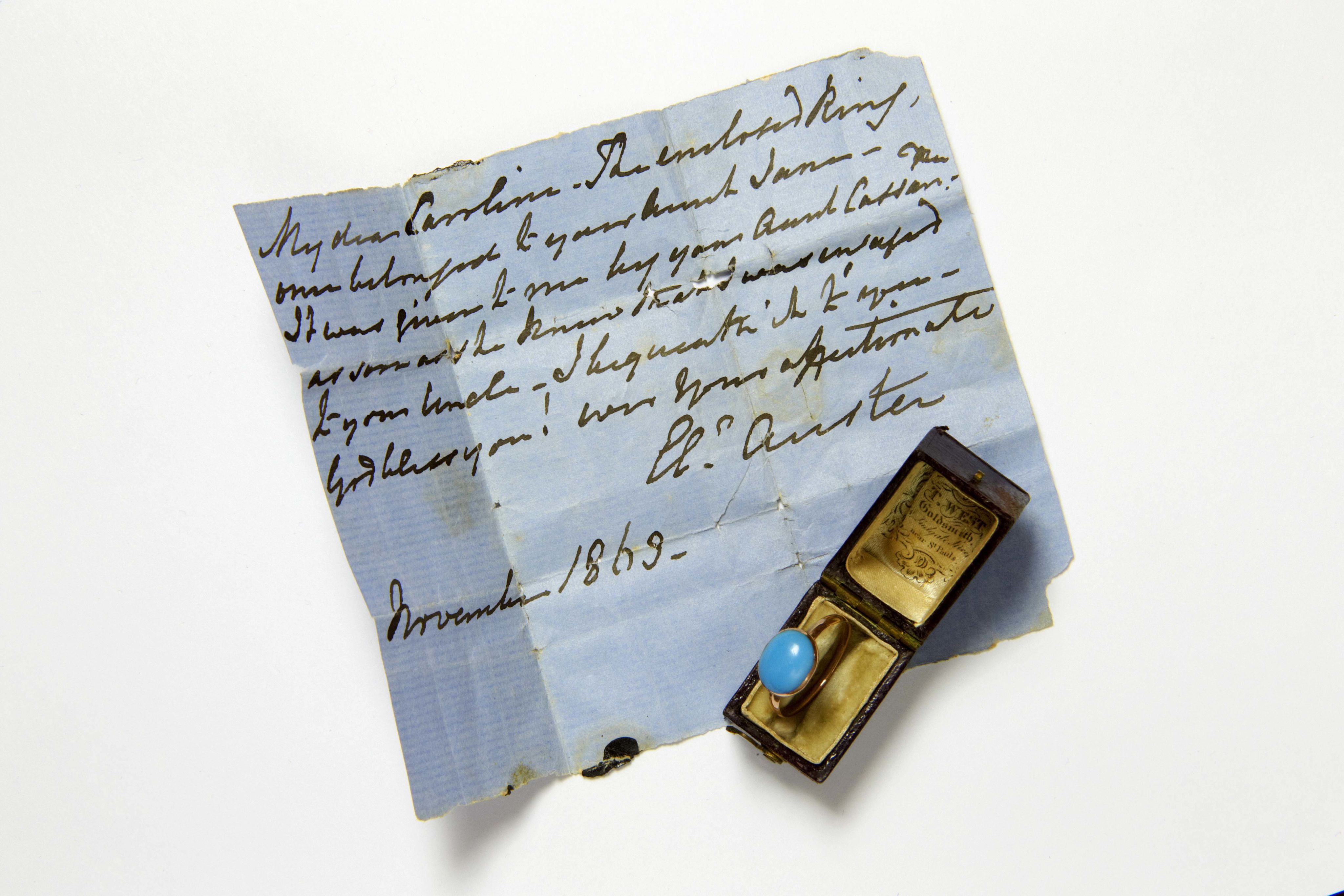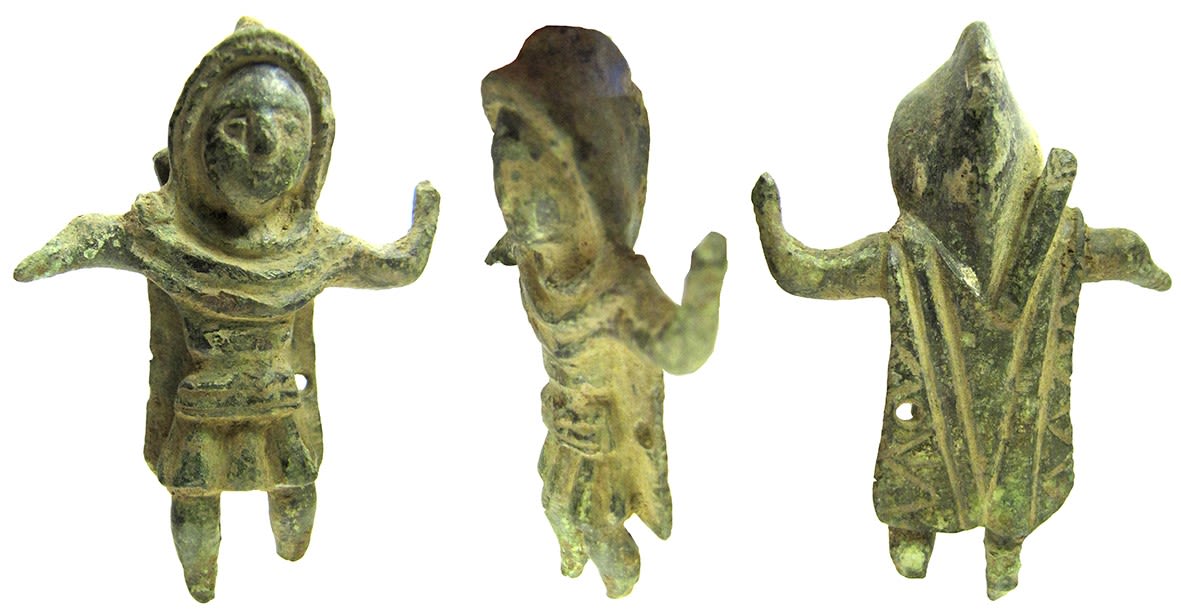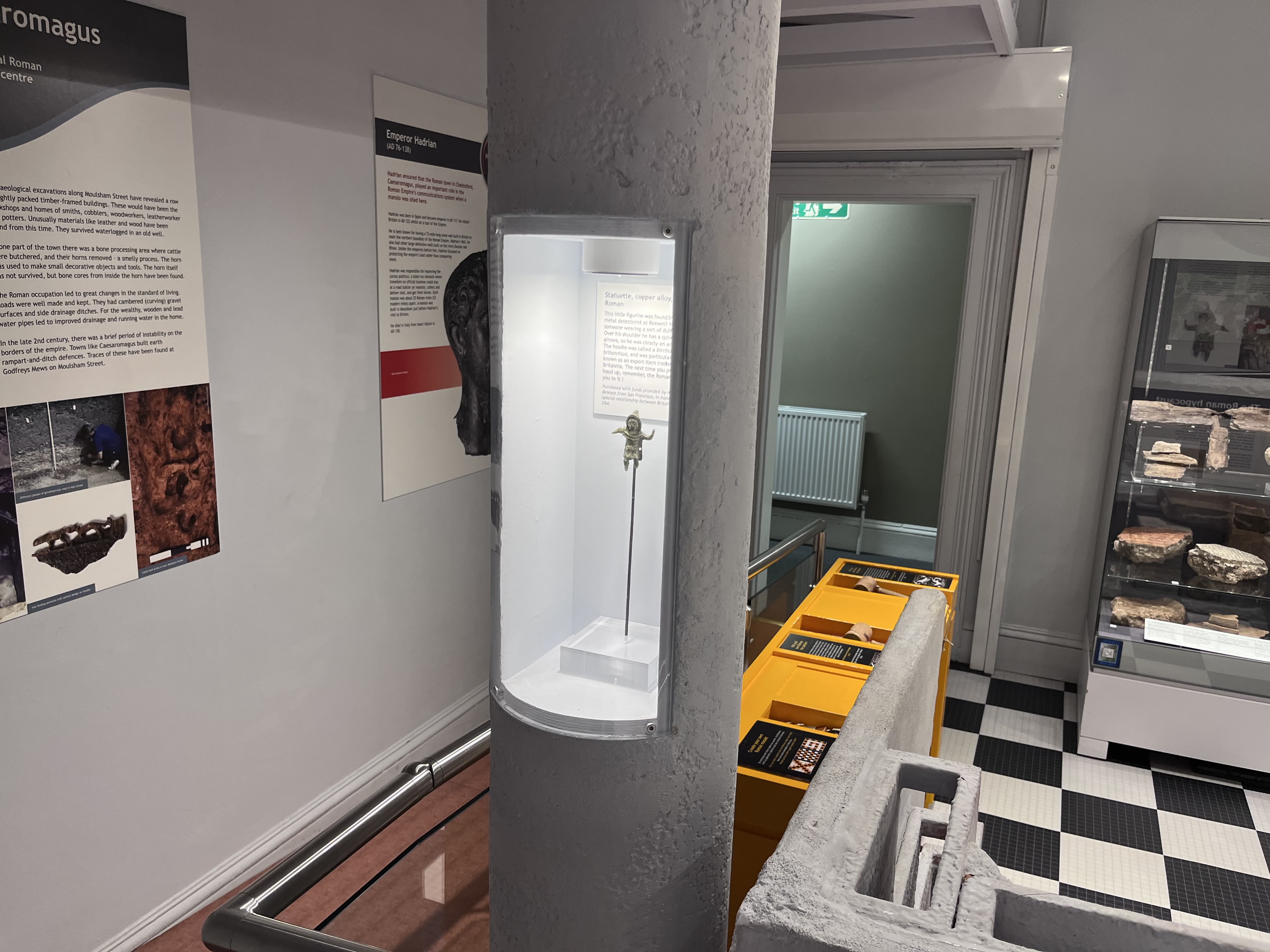Celebrating 70 years of national treasures saved for the public
This year marks the 70th Anniversary of the publication of the Waverley Report and the establishment of the Reviewing Committee on the Export of Works of Art and Objects of Cultural Interest ('the Committee').

If a cultural object is intended to leave the UK, for example someone has bought it at auction, the UK Government has the power to stop it from being exported to enable it to remain in the country for the public to enjoy.
How do they decide if it’s a national treasure? 70 years ago, the Waverley report was published, setting out three criteria:
- History: Is it closely connected with our history and national life?
- Aesthetics: Is it of outstanding aesthetic importance?
- Scholarship: Is it of outstanding significance for the study of some particular branch of art, learning or history?
The Waverley report also established the Reviewing Committee on the Export of Works of Art and Objects of Cultural Interest (the Committee). That Committee advises the Secretary of State for the Department for Digital, Culture, Media and Sport (DCMS) if a cultural object due to leave the country meets the criteria set out.
Any item considered too important to leave the UK can be placed under temporary export deferral which gives a final opportunity for institutions in the UK the chance to raise the money, purchase the item and retain it in the UK for the public to enjoy.
Over the past 70 years, public collections and audiences across the UK have benefitted from the Waverley Report and the Committee, which play a significant role in saving national treasures for everyone to enjoy.
The Committee have picked just seven of the hundreds of artefacts that have been saved for the nation in that time, to showcase what can be inspired when museums and galleries acquire a national treasure into their collections...
Large Anthropomorphic crab by Robert Wallace Martin – The Box, Plymouth

Who would have thought a large, grotesque crab with a giant toothy grin would be considered a national treasure? Both the Reviewing Committee and The Box in Plymouth saw the beauty in Robert Wallace Martin’s sculpture.
Lovingly named ‘Colin the Crab’ by visitors to The Box, the sculpture is one of the most significant acquisitions for the museum, displayed in a stand-alone showcase at the entrance and greeted by 350,000 visitors since opening. The piece connects visitors to the art gallery, where they can see a selection of Martinware.
According to the gallery, it’s a visitor favourite and one of the most recognisable and beloved items in their collections. The crab has also been the centrepiece of an artist-led, multi-session engagement programme for their Arts and Minds group. The group is for people living with early to moderate stage dementia and their carers.
The learning officer for Arts and Minds said:
‘The group have always loved seeing Colin the Crab at The Box. When they are making their own Colins, they pop out and see him. He also welcomes them to each session and sparks a smile and memories of their own ceramic responses.’

Arts and Minds group © The Box, Plymouth
Arts and Minds group © The Box, Plymouth

Arts and Minds group © The Box, Plymouth
Arts and Minds group © The Box, Plymouth
Jane Austen’s ring – Jane Austen’s House, Chawton
It’s a truth universally acknowledged that a ring once owned by Jane Austen would be in want of national treasure status - particularly when these artefacts have such a strong link to the author. While Austen is now beloved by millions, she was not nearly as famous during her lifetime, making artefacts linked to her rare to come by.
In 2012, a small turquoise ring, paired alongside family letters referencing Austen’s link to the piece of jewellery, were put up for auction, and was bought by the American pop singer Kelly Clarkson. However, an export ban was placed on the ring and Jane Austen’s House succeeded in raising the money to keep it in the country.* Kelly Clarkson hasn’t been able to visit Jane Austen’s House, but she wished the Museum well and commissioned her own replica which she continues to wear.
Just like Kelly Clarkson, many visitors expressed interest in a replica and the House commissioned a local craftsperson to create gold and silver versions of the ring based on exact measurement of the original. These rings are extremely popular among fans from all over the world and the sales support the continuing operations of Jane Austen’s House.
*Rumour has it, Clarkson’s hit ‘Since You’ve Been Gone’ was inspired by these events. (Extremely unreliable source).

The Fortress of Königstein from the North by Bernardo Bellotto – The National Gallery, London


Visitors in the exhibition Bellotto: The Konigstein Views Reunited © The National Gallery, London
Visitors in the exhibition Bellotto: The Konigstein Views Reunited © The National Gallery, London

Gabriele Finaldi, Director, speaking at the Bellotto celebration event © The National Gallery, London
Gabriele Finaldi, Director, speaking at the Bellotto celebration event © The National Gallery, London
In 2017, the National Gallery saved The Fortress of Königstein from the North for the nation. Painted by the Venetian view painter Bernardo Bellotto (1722–1780) when he was at the height of his powers as court painter to the Elector of Saxony, this painting is the most important of Bellotto’s mature works remaining in the UK.
Since its acquisition, the painting has played a major role in projects both at the National Gallery and around the country. As well as being the centrepiece of displays at the National Gallery, the painting went on a museum tour to National Museum Cardiff, Sunderland Museum & Winter Gardens, and Norwich Castle Museum & Art Gallery. In summer 2021, Bellotto’s five views of Königstein were reunited for the first time in 250 years in a Room One exhibition at the National Gallery. This exhibition, which was accompanied by a richly-illustrated catalogue, then toured to Manchester Art Gallery.
In addition to these exhibitions and displays, Bellotto’s Fortress of Königstein from the North has generated a diverse range of public programmes and experiences. These range from curator lectures, to family-oriented mindfulness sessions; from online “Talk and Draw” sessions attended by over 340 people during the pandemic, to haikus written by children visiting the exhibition in Norwich.
Roman statue – Chelmsford Museum, Chelmsford
In 2017, Chelmsford Museum acquired a hugely significant find by a metal detectorist in Roxwell, a village close to Chelmsford. Buried in the ground was a tiny bronze Roman statue, only 66 mm in length, wearing a woollen hooded cloak known as a Birrus Britannicus (more commonly known today as a ‘hoodie’).
Roman copper figurines are not usually exceptionally rare, but when put in front of the Reviewing Committee, they found the distinctively unique thing about this item was the character’s dress, which made it a find of national importance.
Former committee member Leslie Webster FSA, in a statement from the DCMS, and the Arts Council said: ‘Both the style and the braided decoration of the cloak is unparalleled in art, supporting the thesis that this is a unique depiction of a specifically British garment, recorded in the early fourth century AD as a significant export within the wider Roman Empire.’
Chelmsford Museum acquired the figure with funding from America. At the time, the museum was going through a major Lottery-funded redisplay and this acquisition was a perfect fit for their Roman room.
The figure was cleaned and conserved, revealing more of the detail of the cloak and quiver. Dr Mark Curteis, Chelmsford Museum’s Assistant Museums Manager, said:
‘the Roman ‘hoodie’ continues to resonate with audiences today and has come to be one of our key, must-see Roman exhibits for our visitors. For our local community, it has come to represent the pride we have in the city’s origins.’


Lobster Telephone by Salvador Dalí – Scottish National Gallery of Modern Art, Edinburgh

With just two weeks to raise the funding, and the confirmation of the funds being an hour or so before the export deadline expires, it really came down to the wire for the National Galleries of Scotland (NGS) to purchase Salvador Dalí’s ‘Lobster Telephone’ (1938).
Made by one of the most iconic artists of the 20th century, Dalí sculpted 11 lobster phones for his patron Edward James in 1938. One of these sculptures now resides in the Scottish National Gallery of Modern Art (Modern One) and, since the acquisition, has featured on national television, radio and in dozens of UK newspapers - The Scotsman called it: ‘the perfect icon of Surrealist daftness.’
In November 2021, NGS opened their exhibition ‘New Arrivals: From Salvador Dalí to Jenny Saville.’’ Taking up the whole of the ground floor of Modern One, this exhibition presents a fascinating showcase of the latest modern and contemporary acquisitions made for the nation.
From advertising billboards seen by a million pedestrians and car passengers to being the flagship image on the gallery’s website’s main image, and Smartify site - the ‘Lobster Telephone’ is the iconic image to represent the organisation’s ‘New Arrivals’. The exhibition is expected to attract over 300,000 people, many of whom will be pulled in by the Dalí acquisition.
As well as being visually effective for outdoor advertising, the ‘Lobster Telephone’ is one of NGS’ best-selling postcards: an intimate way of sharing a cultural object beyond the museums they’re in. The acquisition has clearly caught the imagination of visitors.

© National Galleries of Scotland
© National Galleries of Scotland

© National Galleries of Scotland
© National Galleries of Scotland
Astor Armada Drawings - National Museum of the Royal Navy, Portsmouth


Director General Dominic Tweddle Looks at Armada Maps © National Museum of the Royal Navy
Director General Dominic Tweddle Looks at Armada Maps © National Museum of the Royal Navy

The Armada Maps © National Museum of the Royal Navy
The Armada Maps © National Museum of the Royal Navy
A complete set of ten maps charting the defeat of the Spanish Armada were saved for the nation in 2021 by the National Museum of the Royal Navy (NMRN), who raised the money in just eight weeks.
The ink and watercolour Armada Maps present a defining moment in England’s national and naval history, presenting, in real time, a Navy defending England’s shores against invasion by the 16th Century’s imperial super-power of Spain. The maps are the earliest surviving representations of the Armada campaign, drawn up around 1589, clearly showing their historical importance.
Since the acquisition, NMRN worked with conservators and scientists at The National Archives, to identify the materials used in the maps. Interestingly, it was discovered that 19th Century colour pigments were added to help preserve the maps, revealing crucial discoveries about conserving artefacts thanks to science and historical investigation.
Due to the pandemic, the maps have not had the chance to go on the tour that was planned just yet. For now, NMRN are in the process of publishing a blog around the research, as well as a workshop to highlight the conservation techniques discovered. By sharing these findings, with the maps as the example, it helps in the preservation of artefacts and the enjoyment and learning for experts and the public.
Portrait of Mademoiselle Claus by Edouard Manet – Ashmolean Museum, Oxford
In 2012, the Ashmolean Museum in Oxford acquired Edouard Manet’s Portrait of Mademoiselle Claus, but this was only the beginning to the significance of saving just one painting for the nation. The Ashmolean wanted to use the acquisition to engage with visitors to the museum, with audiences across the nation, and widen the museum’s community engagement.
After its acquisition, the painting visited seven museums and galleries around the country from January 2013 to December 2014. Each visit was accompanied by material for adults and children to engage with the piece. The success of these events is shown through the extraordinary number of visitors, and the very extensive press coverage, both local and national.
As well as it’s tour, the Ashmolean embedded the painting into their existing education activities, including trails, talks, school tours and family workshops. The painting was also used to engage with local community groups including the project, ‘Me, Myself and Manet’, whereby young people with early onset dementia and acute mental health issues were inspired by the painting to create music, art, jewellery, and writing. Another project, ‘Beyond the Balcony’, saw young people exploring the conceptual space behind and in front of the balcony.
This acquisition has shown how a single painting can inspire a great number of activities and can be interpreted in a variety of ways by a wide range of audiences and enriching lives with art and culture.


Delve deeper
Find out more about the work of the Reviewing Committee





